The Best Meal Delivery Services : Reviews Of The Best Heat And Eat Meal Delivery Services For Living In A Post Pandemic World
Reviews: Meal Delivery Services
If you’re old enough to know what “TV dinners” are, you probably rarely push your cart through the frozen food aisle.
For more than fifty years, what was considered a Friday night break for Mom and inspired us to break out those plastic foldable tray tables, wasn’t meant to compete with Mom’s steaming plate of wholesome cooking served up with all of the American goodness we knew and loved. Ah, Swanson’s fried chicken with corn and a blob of apple something, or Salisbury steak with runny brown gravy and tater tots.
For decades, the sectionalized aluminum foil or pressed cardboard trays of processed meat covered in that familiar mysterious brown sauce, glazed over frozen veggies and, if you were lucky, a rock hard brownie baked into the foil like a cupcake went forever unchanged. As time went on, though, a few began to offer up options with low sodium or health-ier ingredients (which meant they were smaller portions and had no sauce or flavor), but that was about it… until very recently.
Frozen meals in a tray seemed to lagged behind improvements in frozen pizzas, which quickly evolved into a reflection of the real world pizza business by the early 90’s. Deep dish Chicago style, thin crust, cauliflower, hell, even Wolfgang Puck invented his own line, along with California Pizza Kitchen, and others.
Seems the microwaveable, heat and eat category seemed forever entombed in the Swansonite box, with only a few standouts like Marie Calendar slightly upping the game with full portioned home cooking style meals (although still loaded with salt and saturated fat) targeted directly at the comfort food market.
The stigma associated with processed frozen meals seemed just too great for healthy-minded eaters to overcome. By the end of the 20th century, many Americans were really beginning to take an interest in improving their dietary habits and become more attentive to nutrition, since it clearly meant a longer lifespan. In just the last 3-4 years, a few innovators and “TV Dinner Disruptors” have literally reinvented the heat-and-eat marketplace, with healthy, cleaner, nutrition based meals- but strangely, they steered clear of the frozen food aisle.
The trend really took off with the ability of consumers to order direct from web based platforms that offered a selection process that allowed you to choose your own meal plan, from traditional home cooking to healthier Mediterranean style meals, paleo, keto diet selections, dishes targeted at diabetics, and even plant based and vegan meals. In the middle, though, comfort meals remain, thought some of the ingredients have been modified to provide more wholesome nutrition.
Now, you can tailor a week or even a months worth of ready to heat and eat meals and have a box delivered to your door, safely encased in dry ice or frozen gel bags, designed to hit your doorstep in the safe range of below 45 degrees Fahrenheit, ready to be transferred to your fridge. Thanks to minimal transit time offered by FedEx or UPS, who understand the business model that requires getting these packages to your door very quickly, the technology and logistics have been in place now for a solid five years. And, people are gobbling it up.
But why renovate the heat-and-eat dinner space in the first place? Mike Wystrach, the CEO of Freshly, a healthy refrigerated meal delivery service that crafts heat and eat meals, says that people need easy to prepare, healthy options now- more than ever. He says Freshly was founded to solve a problem he himself was having: “I wanted to eat better, knew how to do it, but didn’t have the time or desire to cook,” Wystrach stated.
The TV dinner model was a great meal planning solution, and was likely driven by post WWII booms in industry and family growth, but the business largely remained the same for 50 years, and need a huge overhaul both health wise and image wise.
The Tech Is The Same, But The Food And The Presentation Is A Whole New Game
The so-called TV dinners of today look more like something you’d pickup as carry-out from a casual, trendy local restaurant that out of the deep end of your grocers freezer.
The companies out there who have reinvented the game (we’ll provide you with the links to our curated list of heat and eat meal purveyors below) have improved the technology of flash freezing to an art form, which seals in the nutrition and flavors. Matt Davis, one of the founders of Mosaic Foods, which offer plant based meals that are heat and eat, describes the metamorphosis of the industry as more of a “new technique than new technology”, and when you consider some of the ingredients used in their meals, it’s quite a refreshing and haute cuisine kind of an upgrade- but without the uppity price point.
Some of Mosaic’s ingredients include butternut squash, white beans, brussel sprouts, roasted red peppers, chickpeas, and seasoned jackfruit. A far cry from the spurt of frozen mashed potatoes or dollop or corn in the old Swanson’s lineup.
Most of the heat and eat services that provide ready made meals have kept a simple formula in mind. Make the vegetable the star of the show, and surround it with a tight lineup of protein and fiber to offer maximum nutrition, visual appeal and flavor. Seasonings and sauces are often included, and the ubiquitous Siracha sauce is the perfect way to kick up almost any meal.
Mosaic’s Tuscan Pesto Bowl, made with plant based ingredients, offers 24 grams of protein and 19 grams of fiber, while Freshly’s Teriyaki Salmon Cakes selection has 21 grams of protein and 5 grams of fiber. Most frozen grocery store TV dinners are weak in nutrition and flavor, offering as little as 6 grams of protein.
Kettlebell Kitchen, a pre-made meal company popular in the fitness community, especially among Crossfitters, which even creates meals based on specific macronutrient targets. “Our team then comes up with delicious and creative concepts prioritizing seasonal vegetables, herbs, and spices,” explains co-founder Joe Lopez Gallego. “We utilize ingredients that fit each of our meal plan guidelines, which ensures that we’re creating dishes that will help our customers meet their goals.”
Sample meals include barbecue chicken with roasted zucchini and Thai basil chicken. There are also options for ketogenic and vegetarian dieters, and some selections are even Whole30-approved.
These companies then use innovative spins on existing technology to ensure their food lasts until people are ready to eat it. Mosaic co-founder Sam McIntire says they asked Michelin starred chefs for tips. “With our pesto, for example, we learned that if you blanch fresh basil, it will help the pesto keep that vibrant green color instead of turning it into a dark color,” Davis says.
You need to keep an eye out though, as some prepared heat and eat meals still can have higher sodium levels than many traditional frozen foods. Mosaic’s Tuscan Pesto Bowl has 790 milligrams—more than what you’ll find in some more traditional healthy freezer offerings.
Some companies started out in typical restaurant kitchens and slowly are as demand soared, not offering nationwide service. Jet Fuel Meals, for example, serves souther coastal Florida only, delivers your prepared and chilled meals three times per week, and offers a selection of meal plans which include Athletic, Maintenance, Ketogenic, Plant Based, Kids, and Pescatarian dishes. Your meals are delivered no later than 6AM so that you have them for the day and can get them stocked in your fridge before you leave the house.
Healthy Chef Creations offers a package that includes five healthy dinners for your family, delivered in three days, and they only take orders by phone. Their meals are ready to eat dinners, using organic produce and free-range meats whenever possible. A typical weeks sampling might include such comfort food favorites as Chicken Au Jus, Turkey Meatloaf, Italian Spaghetti With Meat Sauce, Street tacos with Steak, Turkey Au Jus, and as a bonus, and quite a nice surprise, their Immune Support Drink, E3 Live. Total price for this package is around $90. At about $9 a head, it’s probably a whole lot less expensive than picking up carry out for your local boutique cafe or chain restaurant.
Another company that has created a unique program by designing a full line of healthy, certified organic meals, is FreshNLean, which states that it focuses on making healthy eating accessible to everyone. The company incorporates plenty of fresh, organic, whole-foods into their program. Their foods contain no antibiotics, growth hormones, or other added substances. They advertise using tender meats, clean fats, vegan and vegan low-carb offerings, and the average cost per meal is about $10.50, making a wholesome, clean meal fairly affordable.
Food science and food handling skills play a big part in the prepared meals business, too, primarily to insure that food is prepared in the most sanitary of conditions in commercial grade facilities which are closely monitored by local and federal health departments, with many having food handling specialists on staff as part of their meal design program.
The art of preparing a meal and shipping it across the continent, especially if it is not flash frozen but only refrigerated, requires a practical knowledge of ice packs, gel packs, insulate materials, and shipping logistics.
A lot of the heat and eat business has abandoned flash freezing their meals altogether. Food is prepared and cooked, and immediately flash cooled to 35 degrees Fahrenheit, just above freezing, and packaged and then immediately placed on trucks at tightly managed time intervals. Customers store the meals once they arrive in the fridge, and then microwave or heat them in the oven when ready to eat, usually over a span of 3-5 days.
A company called Real Eats is one of the few meal delivery services that isn’t a true eat and heat option, but isn’t a meal kit operation, either. Rather, they prepare finished dishes, then quickly vacuum package their meals, and then flash cool the meals.
The consumer on the other end can either boil in bag or microwave the meals, which are shipped in specialized plastic bags which are safe, the same packaging technique as the classic “sous-vide” style of French cuisine. Their vacuum package pouches are 100% food-safe, BPA-free, plasticizer-free, phthalate-free, and do not leach chemicals of any kind into your food.
With minimal preparation required, Real Eats contends that their meals arrive to your table looking more like a chef prepared dish, since are not in pre-fabricated containers or plastic trays.
Heat And Eat Meals In A Post-Pandemic Society Is Going To Be The Wave Of the Future Of Home Cooking
During the coronavirus pandemic, local restaurants and cafes were forced to introduce curbside pickup and local delivery, and have quickly adapted to creating these prepped and ready to heat meals, but don’t have the refrigeration or freezing model built in, and they will likely find their own niche in their local customer base alongside of the heat and eat online segment, as our culture shifts from eating out in large public spaces to eating more at home, at least for the foreseeable future.
Coronavirus Pandemic Is Rocket Fuel To Heat And Eat Meal Delivery Service Market
The driving force behind the stratospheric growth of the meal delivery industry has been the convenience of having affordable, fully prepared meals or meal kits delivered to homes that offer balanced nutrition as well as minimizing prep time in the kitchen.
The sudden impact of the coronavirus pandemic, requiring most Americans to quarantine themselves at home, avoiding restaurants and grocery stores, will likely change the landscape of how we enjoy meals at home. While many people enjoy cooking and preparing meals, an overwhelming majority of the population are willing to purchase ready made, heat and eat meals, provided the quality is high and the prices are low, or reasonable. And in fact, heat and eat meal programs are skyrocketing in demand, and is likely to continue to grow well beyond the wind down phase of the pandemic.
Some of the fundamental questions people are asking about meal delivery services, especially heat and eat options include the safety of having a box filled with meals shipped to your home. But is that even safe?
Turns out, the answer is a resounding yes. Dr. Kathryn Jacobsen, Yahoo Lifestyle’s Public Health Contributor, stated, “Getting a meal kit delivered to your home is probably safer than going to a grocery store, since you’ll have fewer contacts with other people and the packages and foods you touch are likely to have been handled by fewer people.”
This makes total sense, and even the FDA states that there is no evidence of food or food packaging transmitting the novel coronavirus to consumers. “Ask that your boxes be left outside your home, so that you can maintain physical distance from the person making the delivery,” Dr. Jacobsen recommends. “After receiving the package, remove the food from its packaging, dispose of the packing materials, and then wash your hands and sanitize any surfaces that the packaging has touched.
Getting Started And How A Meal Delivery Program Works
The appeal behind meal delivery services lies in the obvious fact that you don’t have to get in your car and make an extra trip to the market for ingredients. You don’t risk exposing yourself or your family members to infection, and new research demonstrates that spending time in the vicinity of the cashier or check out area can be hazardous to your health.
Your shopping cart is filthy to begin with, and the fact that your products have likely been handled by several shoppers, stock people, and now the cashier, who has touched every item that the last 100 shoppers have had their hands on, only makes the situation worse.
The checkout equipment such as the credit card swiping device, and exposure to the checkout person, all contribute to the hazardous funnel that you have to go through on your way out of the store. Purchasing prepared meals that are delivered to your door eliminates this hazard by completely bypassing it.
Since meal delivery has been a fast-growing competition between brands, they’ve quickly evolved their delivery methods to make your experience simple and enjoyable.
Once you schedule your meals for the week, you’ll get a notification of which day your meals will arrive. Your ingredients are packed at the nearest distribution center and placed into refrigerated boxes. From there, UPS delivers the boxes straight to your door, where they stay safely refrigerated and sealed up until you get home for the day.
Most meal delivery programs are cognizant of using recyclable materials in their packaging, especially because every portioned ingredient is compartmentalized into even more packaging.
One thing you should be aware of when choosing your meal plan is the day that your meals deliver on. If you’re someone who is gone on Mondays and Tuesdays but your delivery arrives on Monday morning, you’ll want to see if there is any flexibility to your meal’s arrival.
You’re paying for a weeks’ worth of dinners, and you don’t want them to go to waste just because it arrived on a day that you’re not home. This might not be something that crosses your mind in planning out your meals, but in a practical sense for the weekend warriors or work travelers, this should at least be a point of focus on your comparison list.
How Many People Does a Meal Delivery Plan Serve?
It’s no secret that there’s a large difference between the serving needs of a larger family and a couple. You don’t want to sign up for a plan that only feeds half your household with each meal.
Most meal delivery programs offer Family Plans to give you enough servings for the entire dinner table. Whether it’s the simple family plan offered with HelloFresh or the more intensive “Omnivore” vs. “Carnivore” options for the family plan in Green Chef, you can find the perfect menu for your family.
Luckily, for each meal delivery program, you won’t have to dig too deep to find out if a family plan is offered. One of the first steps you take when shopping around is selecting the plan you want. From there, you can take a look at the menu options.
If you’re searching for a “Classic” plan, you can choose the number of meals you’ll receive in a week. Most of these will serve more than one person, which for the single person means that you’ll get a good deal of leftovers to enjoy the next day. You can consider this a free lunch prepared by your past self. What a nice gesture you’ve done for yourself!
What does Pricing Look Like?
Pricing will likely be a driving factor to most folks and for good reason. After all, if money weren’t an issue, you might as well go to a restaurant every night to enjoy a delicious, prepared dinner.
Each meal delivery program is priced based on the number of ingredients offered with each meal, meal sizes, amount of protein, and market rate. For programs with more intensive options like gluten-free and vegan choices, you may find yourself with a heftier price tag. But, if you find yourself replacing ingredients to make up for foods you can’t eat, you’re also investing more into the total than you originally planned.
Remember, a serving is different than a meal. For meals that are priced per serving, and each meal serves 3 people, you need to multiply that price by 3 per meal. Anyone who is dining alone can usually depend on the leftovers lasting for the next day’s lunch, so factor that into your cost analysis.
Our advice for price comparisons: Settle on a budget before you start comparing numbers. It’s best to take a look at what your price point is before overwhelming yourself with different meal delivery pricing. There are so many great options, so you’ll likely benefit from narrowing down your target.
How should you set up a budget like that? Simple. Take a look at the amount of money you’re spending at restaurants and cooking at home. For a single person, each meal can serve as lunch and dinner (typically), so a two-serving meal takes the cost of your dinner and lunch.
How much are you normally spending on dinner and lunch? Eight dollars for a 12-inch sub? $1.50 for a taco? Are you sacrificing some life-sustaining ingredients to achieve that one-dollar food budget? Have you thought about future doctors’ visits? Work hours lost in the restroom?
These should all be factored into the equation. In the end, meal delivery plans usually even out as a solid investment with the added bonus of crafting your own meals and learning how to cook.
Why the Quick Email Sign-Up?
One of the biggest criticisms that you’ll see with meal delivery sites is their quick email address grab when a consumer signs up to look at a meal plan. It’s natural to be hesitant with this step, especially when you’re just browsing and comparing.
Once you enter your email address and continue to the menu options, you’ll see that coupons and daily deals start adding up in your inbox. These are helpful for those food adventurers wanting to test out these new programs. With introductory discounts, you really do benefit from these savings. However, you can easily opt out of these subscriptions, so don’t let the email sign-up deter you.
What if I Don’t Like the Options?
You’ve dug past the email sign-up and you’ve made it to the actual scheduling of your meals. Turns out, the meal delivery program you signed up for doesn’t have gluten-free allergies or you’re just not feeling the flatbread options.
Breathe easy because the cancel button works.
The meal delivery programs that we’ve rated and compared are legitimate, consumer-based programs that depend on user input and feedback to work properly. The plans that fall under our scrutiny have made it to the highest spots for a number of great reasons. One of those being that they follow through with easy cancellations and simple scheduling.
We’ve scoured reviews to ensure that if a product’s customer service is lacking, it’s made clear before you make a commitment.
A powerful tool of 2018 is flexibility, and products are using this as their marketing campaign. Since these programs are designed for the busier individuals, they know that you won’t go through a 20-step cancellation process. Most meal delivery programs are designed to be user-friendly, accessible via mobile, and streamlined. If they don’t meet these criteria, reviewers are sure to mention this as it’s an essential part of the user experience.
How Complicated are These Meals?
You can literally go Martha Stewart style home cooking to straight up stick the meal in a microwave and call it a night. The average meal delivery plan is focused on shortening your night’s routine while still offering a flavorful recipe that everyone in the house will enjoy. That said, most meals take about 30 minutes from prep to serving.
As testimony from this writer, a beginner chef will likely take more than 30 minutes from beginning to the end of the meal. That’s not to say you won’t improve your cooking speed over time but plan on some turbulence as you take off for this culinary flight.
You will need to take into consideration that clean-up for these meals is not an added feature of meal delivery. While they show up in a tidy, organized parcel, you’ll have some clean-up ahead of you as you separate newly discovered cremas and chimichurri sauces into different bowls. You’ll suddenly find yourself wanting to separate the scallion whites from the scallion greens, which means more cutting board space.
All in all, you should allow an hour of time dedicated to cooking and cleaning for each meal, give or take the simpler and more complicated meals.
Want to go the Super Easy Route?
Maybe you don’t want to touch another cooking utensil for as long as you live, and you’d rather die than walk into the grocery store again (hate to break it to you, but you’ll probably have to go there at some point). If this is the case, look for a pre-prepared meal delivery program where you don’t have to chop or slice a single carrot. Instead, every meal is prepared before it reaches your door. All you need to do is heat the dish up and it’s ready to go.
Diet Meal Plans vs. Non-Diet Meal Plans
Are you looking for a lifestyle change where you’re changing every food habit you have? Or, are you just needing a good dinner a few times a week? Asking yourself this question will direct you in the direction of a dietary meal plan or just a classic plan.
While meal delivery plans strongly take nutrition into consideration when offering certain dishes, they do not portion their ingredients based on the specific nutrients your body needs. But, there are meal delivery plans that do offer this.
Plans such as Nutrisystem actually strategize their daily meals to coordinate with what your specific body needs. With these kits, you receive meals for every meal of the day, not excluding your midday snacks. These plans are more of a lifestyle change since they change every dietary choice that you make. This isn’t just a meal that you can cook for dinner.
Dietary meal plans are perfect for anyone looking for a diet that complements their healthy workout routine. These programs can revolutionize a person’s nutritional balance by providing the right amount of proteins, vitamins, and nutrients without requiring intense meal planning. Consumers should be aware that while these meal plans are designed to taste good, they’re not as focused on the liberty of spices and garnishes.
Some of these meal plans can be considered to be an affordable version of an at-home dietitian. For anyone looking for a meal delivery program that is weighted more heavily on dietary portions, make sure that the program is accredited and meets your daily requirements. It’s best to talk with your doctor beforehand to understand your dietary needs so you can focus on a plan that matches your goals.
What About Allergies?
There is no meal plan specifically aimed at someone with food allergies, although we have a feeling that will be in the works in the near future. With how quickly the meal delivery market is evolving, this is an issue that can be revamped without changing much infrastructure.
Some meal delivery plans are more in tune with dietary restrictions than others, though, and it’s important to look for the plans that differentiate between vegetarian, vegan, gluten-free, diabetic-friendly, paleo, and other options. Plans like Green Chef offer a wide array of options that meet most diets.
These plans will offer more specific options so you can limit the ingredients that go into your meal options. For meal delivery plans, all ingredients are separated, so you can leave the cheddar out if you just aren’t feeling cheese that day. But for serious allergies, we have yet to find a meal delivery program that can offer a full guarantee of no cross-contamination between ingredients.
We believe the future of allergy-inclusive meal plans is on the cusp of the horizon, so keep sending in your feedback to these consumer-based meal delivery companies. Based on what we’ve seen with the quick changes implemented, they’re listening to consumers.
meals delivered might seem expensive, but you’d be surprised: breaking it down
Meal delivery plans are the solution to the new-age problem of simply not having enough time to cook. You’re working hard — you deserve a home-cooked meal, even if you’re the one preparing it! From the less advanced to the more complex meal plans, they all have one thing in common: They reduce the steps needed to cook a meal you can enjoy.
Once you get a box of meals on your doorstep, you can avoid the grocery store. Just in that small step, you’ve successfully added some time to your evening. Plus, you don’t have to run into that gossip queen Carol who you’ve been trying to avoid for the last 5 years.
Yes, there is a little bit of investment that comes with a meal delivery set-up, but compared with eating at a restaurant every night or grabbing a ready-to-eat meal from the store, you actually save money. There is a certain joy you’ll get out of preparing a gourmet for yourself and friends, and we can promise you that these meals are easily Instagram-worthy. Just think of all the capital you’ll rake in with your fancy food photos.
This isn’t just an investment into your weekly diet, this is an investment in your career. We’re probably joking, but fortune does favor the meal delivery box.
With the discounts you receive on your first go at a meal delivery program, there is really no risk in trying. We encourage it, as do thousands of others who have tried out these highly-ranked plans. Take a look at the top meal delivery plans, and start 2019 on an exciting foot as you venture into new food territory.
heat and eat meal delivery companies we recommend and trust
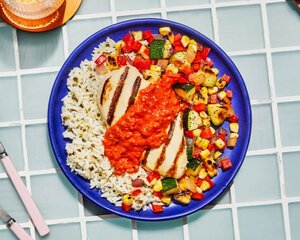
Freshly says its rotating menu of nearly 30 different meals is “crafted by a team of chefs, culinary scientists and nutritionists” to be both healthy and delicious. Average cost per meal $8-9, options for vegetarian, paleo, dairy-free and gluten-free diets as well. Click to check them out and to try.
May 1, 2020

Veestro offers “heat and love” plant based prepared meals. Curry, Portobello Steak, Chickpea Stew. Choose from high protein, nut free, kosher, gluten free, and more. Average meal price $10-12. Arrives naturally frozen. 100% Vegan. Click here to check them out and to try.
May 1, 2020

Nurture Life offers antibiotic free proteins, organic produce, and creates ready to heat meals that are nutrient dense and clean. Dietician designed dishes that are even prepared in bite size pieces for toddlers and babies. Average price per meal $7-13, family meal portions serve 4-5. Click here to check them out and to try.
May 1, 2020
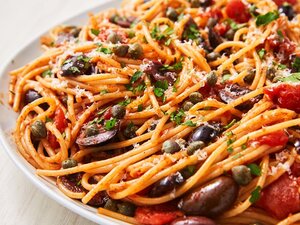
Southern California inspired vegan cuisine featuring healthy, organic farm to table approach. Meal plans delivered once or twice weekly, average cost $13-15 meal. From Pasta Puttanesca (shown) to Thai Red Curry Veggies, a cut above. Chilled, simply heat and eat. 5 or 21 day cleanse meal programs, too. Click here to check them out or to try.
May 1, 2020
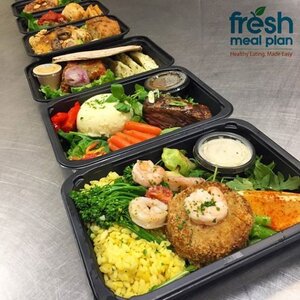
Fresh offers a host of heat and eat meal options, from breakfast to dinner. Using lean proteins, complex carbohydrates, and vegetables, offers paleo, keto, vegan, and “lean and mean” meals. Average price: $10-12 per meal. You have to love their traditional take on comfort meals, too. Click here to check them out and to try.
May 1, 2020

Real Eats preps ready to eat meals, both dinner and breakfast. Meals are designed to serve one adult, are vacuum packaged and sealed, can be kept fresh or frozen. Paleo, vegan, low calorie options. Try “Sustainable Miso Salmon” and “Shrimp & Smoky, Creamy Grits”, Excellent! Customers rave over RealEats for efficiency and taste. Founded by a single Dad, a tad more expensive, but fast and furious, no hassle prep. Get 25% Off Meal Plan with my link.
Jan 19, 2021
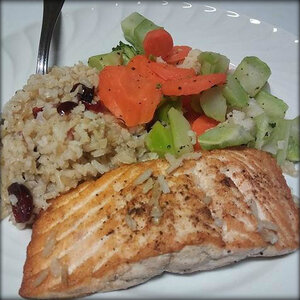
As close as you will get to a personal chef, try Garlic Chili Beef Stir Fry, Roasted Chicken Breast in Sweet Marsala Sauce, even Crab Cakes- and other bistro style dishes. Customers scream in delight. Microwave prep, 2-3 minutes. Try their Couples On The Go package- 10 meals, about $13/meal but plates up like a restaurant dish. Best pricing with my link. Try Shrimp Scampi or Meat Lasagna for under $10 !
Jan 19, 2021
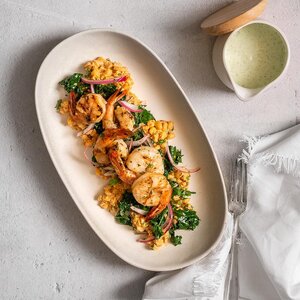
Offering many delivery styles- La Petite (smaller portions), Table For Two, and straight up bad ass meals like “Mediterranean Chicken Breast with Orange Honey Labneh Sauce, Israeli Couscous and Honey Roasted Carrots” and much more. Prepared meals, but with an upscale twist. Average price is $17/meal. No commitment, rated highly on Google Reviews. Click here to check them out.
Jan 19, 2021